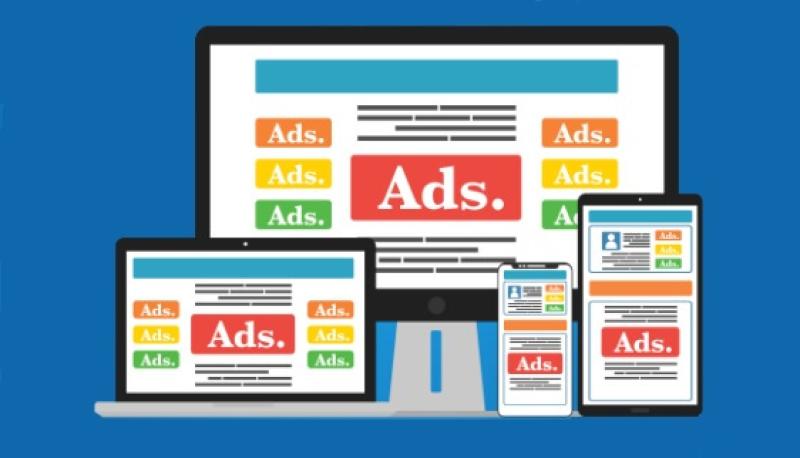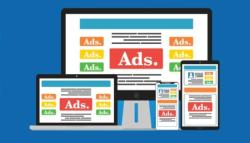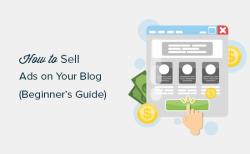How to sell ads directly on my website?
Selling ads directly on your website involves setting up a system to manage ad inventory, interacting with potential advertisers, and handling the technical aspects of displaying ads. Here's a step-by-step guide to help you sell ads directly on your website:
Build a Professional Website:
- Ensure that your website is well-designed, user-friendly, and has quality content. A professional-looking website is more appealing to potential advertisers.
Identify Your Target Audience:
- Clearly define your target audience and gather demographic information about your website visitors. This data will be valuable for advertisers.
Create an Advertising Page:
- Develop a dedicated page on your website that provides information for potential advertisers. Include details about your website, audience demographics, traffic statistics, and available ad placements. Make it easy for advertisers to understand the benefits of advertising on your platform.
Determine Ad Placements:
- Decide on the locations and types of ad placements you want to offer. Common options include banner ads, sidebar ads, sponsored content, or specific sections of your website.
Set Ad Rates:
- Determine the pricing structure for your ad placements. Consider factors like ad size, location, and the level of engagement your website receives. Be transparent about your rates.
Implement Ad Management System:
- Use an ad management system to handle the technical aspects of ad serving and tracking. Platforms like Google Ad Manager, OpenX, or other ad management tools can help you manage ad inventory, track impressions, and facilitate transactions.
Create an Ad Kit:
- Develop a media kit that includes detailed information about your website, audience demographics, advertising options, and pricing. This can be shared with potential advertisers to give them a comprehensive overview of your platform.
Build a Contact Form:
- Include a contact form on your advertising page to make it easy for potential advertisers to reach out. Provide clear instructions on how advertisers can get in touch to discuss partnerships.
Promote Your Ad Space:
- Actively promote your available ad space on your website and through other channels. Leverage your social media accounts and any other platforms where you have a presence.
Negotiate and Close Deals:
- When potential advertisers express interest, be prepared to negotiate terms and finalize the deal. Clearly outline expectations, payment terms, and any other relevant details.
Ad Implementation:
- Once a deal is closed, work with the advertiser to implement their ads on your website. Provide them with the necessary technical specifications for the ad creatives.
Monitor and Optimize:
- Regularly monitor the performance of ads using analytics tools. Track impressions, click-through rates, and other relevant metrics. Optimize your ad strategy based on this data.
Remember to comply with relevant laws and regulations, and clearly communicate with advertisers about your terms and conditions. Building strong relationships with advertisers and maintaining the quality of your content are key factors in long-term success.
Going Direct: Selling Ads on Your Website Yourself
Selling ads directly on your website can be a rewarding route to monetization, offering greater control and potentially higher earning potential than ad networks. But it also requires more effort and strategic planning. Here's a breakdown of the process and considerations:
1. How to Sell Ads Directly:
- Define your value proposition: Highlight your audience demographics, traffic volume, and unique features that attract specific advertisers.
- Create a media kit: This document showcases your website's statistics, ad formats, pricing options, and audience insights.
- Target relevant advertisers: Research brands and businesses whose target audience aligns with your website visitors.
- Negotiate contracts and pricing: Develop different pricing models (CPM, CPC, fixed fee) and negotiate terms with advertisers transparently.
- Manage ad delivery and tracking: Implement ad serving software or use third-party tools to track ad performance and fulfill contractual obligations.
- Maintain client relationships: Communicate effectively with advertisers, provide performance reports, and be responsive to their needs.
2. Steps and Considerations:
- Website traffic and audience: Ensure sufficient traffic and a well-defined audience to attract advertisers willing to pay directly.
- Technical expertise: You'll need basic knowledge of ad formats, tracking tools, and contract management to implement direct sales effectively.
- Sales and marketing skills: Negotiation, communication, and relationship building are crucial for securing deals and maintaining client satisfaction.
- Time commitment: Direct sales require active effort in prospecting, pitching, and managing client relationships.
- Legal and contractual considerations: Understand necessary disclosures, advertising ethics, and legal requirements pertaining to contracts and data privacy.
3. Tools and Platforms:
- Ad management platforms: Tools like BuySellAds, OpenX, and DFP help manage ad inventory, display ads, and track performance.
- Proposal building tools: Services like Visme and Qwilr help create professional media kits and proposals for advertisers.
- CRM platforms: Tools like Salesforce and HubSpot can help manage client relationships and communication efficiently.
Remember:
- Starting with smaller, targeted campaigns might be easier to manage initially.
- Building trust and delivering results will establish your reputation and attract larger advertisers over time.
- Network with other website owners for insights and collaboration opportunities.
Direct ad sales can be a successful and rewarding monetization strategy. By understanding the process, considering your resources, and leveraging available tools, you can attract valuable advertisers and increase your website's revenue potential.




